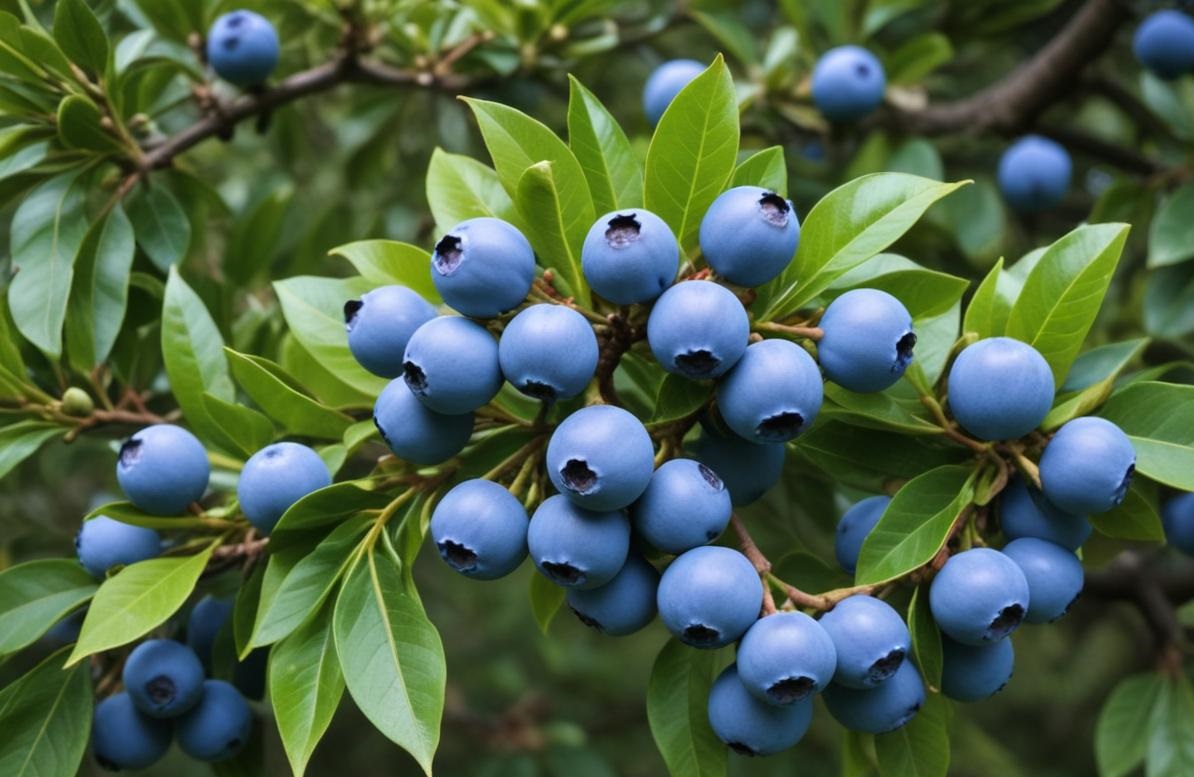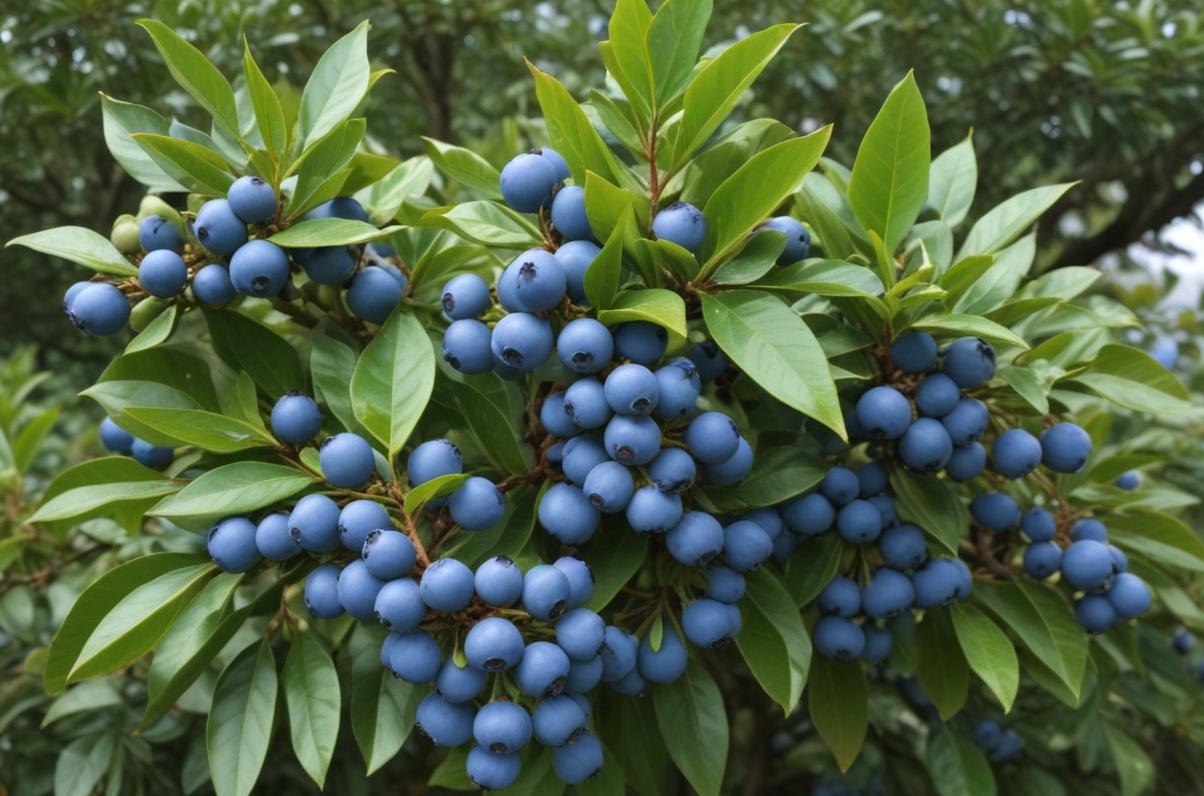Health
Japanese blueberry tree: A Beginner’s Guide

The Japanese blueberry tree (Elaeocarpus decipiens) is a captivating evergreen known for its lush foliage and ornamental appeal. Despite its name, this tree doesn’t produce edible blueberries; instead, it offers year-round beauty to landscapes.
How Tall Is a Japanese Blueberry Tree?
Growing to a height of 20 to 40 feet with a crown spread of about 15 to 30 feet is expected of the Japanese Blueberry Tree. , in an ideal environment, it is capable of reaching even higher stature and is approximately 18 meters high at most. This moderate growth rate makes it ideal for a number of different landscape uses, ranging from being an accent plant to a screen plant.
It has a large crown of dense foliage and possesses the qualities of a Shade Tree, and that is the reason it is used in gardens, for tree plantation on roadsides, etc. Another benefit of trees is that one can easily control the height and the shape of the bush; thus, the gardeners have to take the desired shape of that tree. Well, one should mention that the tree does not grow very fast, and it may take years to reach its maximum height, which means that the tree should be planted and patient when used in the design of landscapes.
What Is Another Name for a Japanese Blueberry Tree?
Elaeocarpus decipiens is the scientific name given to this tree, locally known as the Japanese Blueberry Tree. In some areas, it may also be known as the “Green Emerald Blueberry.” However, it should be mentioned that the tree is not kin to the popular blueberries of the Vaccinium family. Its name probably stems from the plant’s fruit; the fruit is small, dark blue drupes resembling blueberries.
Nevertheless, these fruits are not edible for human consumption. Due to its cosmetic appearance and persistent leaves and fruit, the tree has been incorporated into many horticultural schemes under those given names.
Ideal Growing Conditions
The Japanese blueberry tree grows best in the USDA plant hardiness zones 8-11, with a minimum germination temperature of 46 °F (8 °C), optimal/maximum temperature of 95 °F ( 35 °C), and minimum light requirement of full sun to part shade. It thrives in loamy, sandy, or clayey soils, but the soil has to drain well. The tree prefers a moderately acidic to a neutral pH balance, which should be between 5.5 and 7.3.
An adequate irrigation frequency is required, particularly during the establishing phase and for events with reduced rainfall duration. However, one must be careful with waterlogged medium, for one’s roots might rot. Moderate drought tolerance is observed after the tree has fully grown and string pudendal branches are formed. It is also important to know again that the Japanese blueberry tree can withstand short spells of cold climate but is not fit for a climate with freezing conditions.
Planting and Maintenance
At planting time, dig a hole twice the width of the root ball and deep down to the same depth as the root ball. Additions to the soil include the inclusion of compost and peat humus to improve the fertility of the soil as well as the drainage of the compound. After planting the tree into the hole, fill with soil and avoid leaving any air space, water the soil to help set the roots in their positions.
The layer of mulch added at the base helps maintain the soil’s moisture level and control temperature. Occasional pruning can keep the form several times a year to get rid of dry and diseased branches. Summer pruning, which is from mid-March to mid-October, is advisable since it encourages plant growth. Three times a year: spring, summer, and autumn fertilizer using a high-quality granular to help the following development.

Landscape Uses
Due to its flexibility, the Japanese blueberry tree is used in different landscaping techniques. It has a high density and grows more or less vertically, so it is a great plant for privacy barriers or hedges. When planted as a specimen tree, it will do well as an attractive feature on the garden, lawn, or even close to the driveway.
The tree can also be used as a background for small plants, thus increasing the depth of a given landscaping. Formally referred to as Nova Zembla, it is an upright shrub well suited to traditional or casual style gardens owing to the different pruning techniques that may be used on it.
Are There Blueberry Trees in Japan?
Even though Japan is full of different types of berry-containing plants, the Japanese Blueberry Tree (Elaeocarpus decipiens) is not endogenous. Its popular name, however, does not filter it from originating in East Asia, particularly southern China and Vietnam. Species of the Elaeocarpus genus can be found in Japan, but they are commonly not called blueberry trees.
The naming can also be misleading because the tree does not bear berries. In the real meaning of the word, blueberries are small, dark blue, olive-like drupes that are inedible for humans but may be eaten by birds. Thus, even though Japan has its own original berry plants, the Japanese Blueberry Tree, called in the world of hydroculture, does not originate in this country.
What Is the Best Fertilizer for Japanese Blueberries?
One should use a balanced slow-release granular fertilizer for healthy growth when planting the Japanese Blueberry Trees. Fertilizing the lawn thrice in the calendar year with proper fertilizer will be able to alter the composition of what is required by the lawn. Soil fertility and structure can also be boosted at planting by adding organic matter, like composted cow manure, into the planting holes.
This action adds to the fertilization process by providing water, especially when the weather is dry, making the tree very responsive. Observing the tree and noticing when the leaves have begun to yellow can indicate when it is time to change the fertilizer regimen for the tree.
The Bottom Line
The Japanese blueberry tree is a remarkable addition to any landscape, offering year-round beauty with its dynamic foliage, fragrant flowers, and attractive form. Its adaptability to various soil types and climates and its low-maintenance nature make it an excellent choice for novice and experienced gardeners. By understanding its characteristics and requirements, you can successfully cultivate this tree, enhancing your garden’s aesthetic appeal and ecological value.

-

 Celebrity7 months ago
Celebrity7 months agoThe Private World of Marina Pearl LeBlanc, Matt LeBlanc’s Only Child
-

 Life Style11 months ago
Life Style11 months agoWho is Amra Nor Jenkins? The Untold Story About Jeezy’s Daughter
-

 Entertainment11 months ago
Entertainment11 months agoWhat is Shoujo Ramune? The Comprehensive Guide
-

 Celebrity1 year ago
Celebrity1 year agoThe Untold Truth of William Mapel: A Deep Dive into His Personal Life
-

 News12 months ago
News12 months agoRanch World Ads Review: Everything You Need to Know
-

 Celebrity12 months ago
Celebrity12 months agoWho Is Stephanie Sarkisian? All You Need To Know AboutSteve Sarkisian’s Ex-Wife
-

 Celebrity12 months ago
Celebrity12 months agoThe Untold Story of Denika Kisty: Her Family, Net Worth, and More
-

 Life Style11 months ago
Life Style11 months agoJill Wagner Accident: Life and Health After Accident











